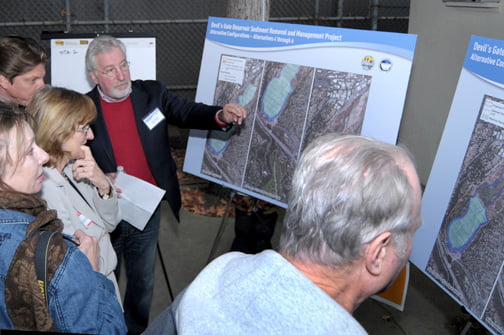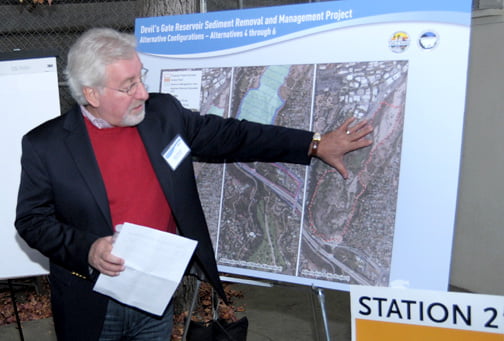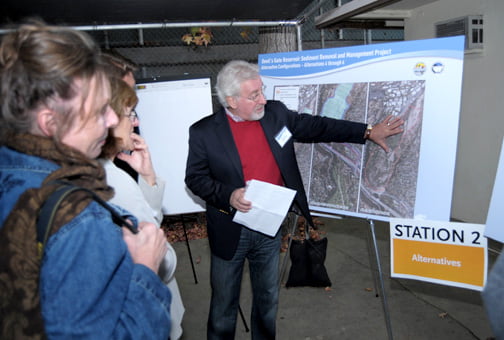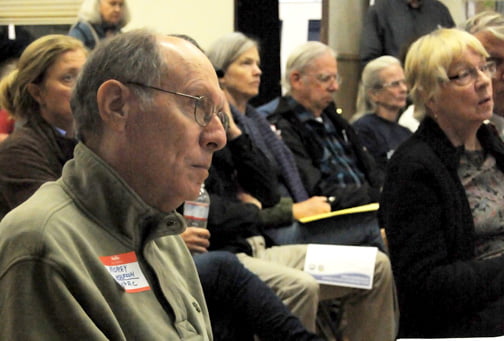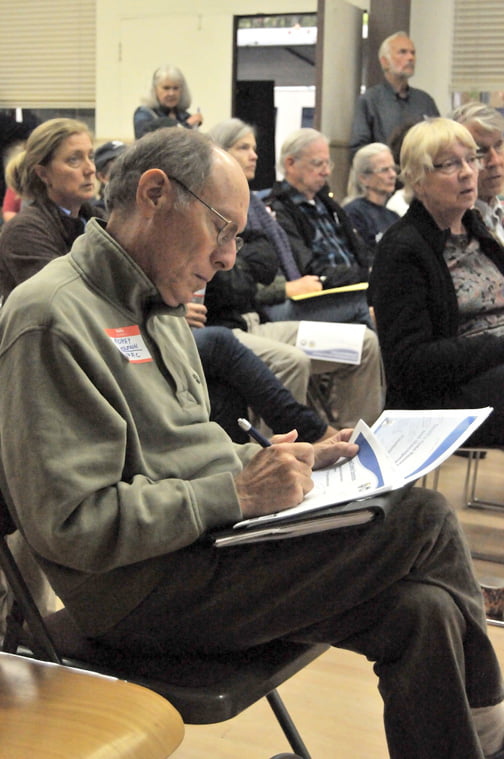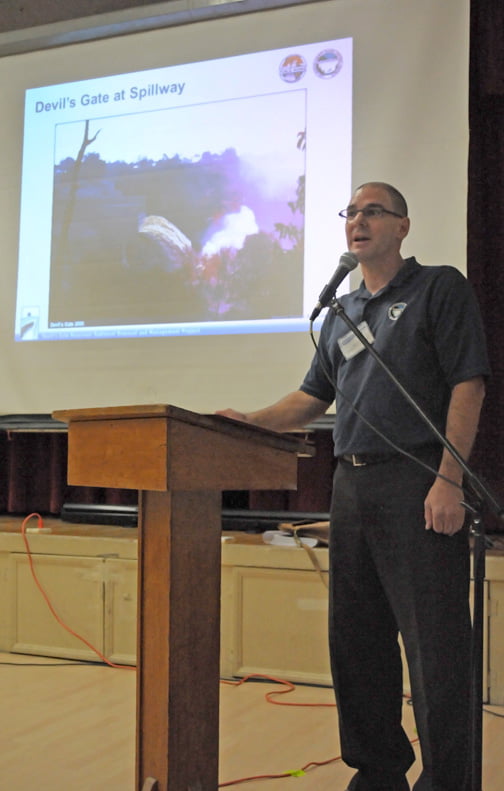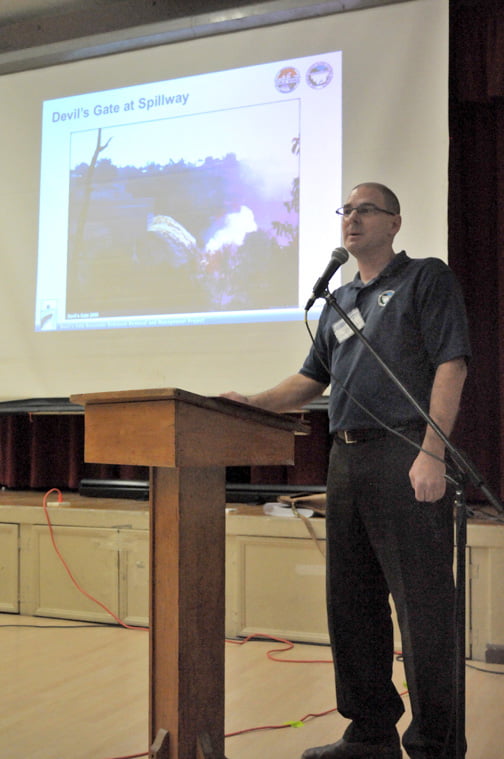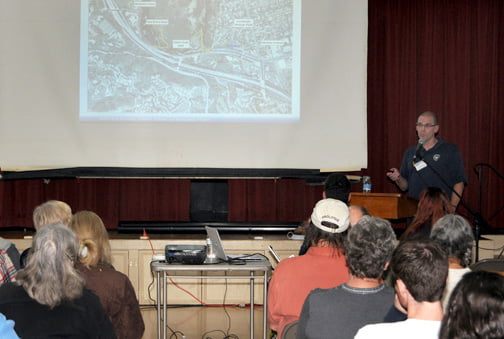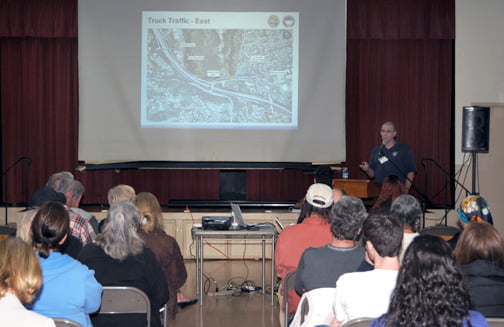
By Jason KUROSU
Following the 2009 Station Fire, authorities have sought ways to limit a potential flood event with a large-scale project involving the removal of 2.9 million cubic yards of sediment from the Devil’s Gate reservoir in western Pasadena.
The proposed project involves the use of trucks to move the sediment, a factor of the project that has drawn the ire of residents living near the proposed truck route. The Dept. of Public Works estimates that removing the sediment will require approximately 50 round trips per hour for 12 hours per day and 425 round trips per day for a period of three to five years, starting around the summer of 2015. The removed sediment would be transported and disposed of at one of three primary disposal sites located in Azusa and Irwindale. According to DPW officials, the trucks would also not operate during the storm season, which takes place between Oct. 15 and April 15.
The DPW released the Draft Environmental Impact Report on the project in October and will be taking public comments until Jan. 6. Public Works held a community meeting at the Community Center in La Cañada Flintridge on Saturday as part of their draft EIR review period, allowing members of the public to ask questions and comment on aspects of the project.
Residents complained about impacts to air quality, traffic and the surrounding wildlife and vegetation, along with other topics covered in the draft EIR. Brian Mooney, director of Environmental and Urban Planning with the Chambers Group, which provides environmental consulting to businesses and government agencies, put together the draft EIR and explained the reasoning behind many of the report’s findings.
The draft EIR identifies several impacts of the project, negative or otherwise, including those of air quality, traffic and noise pollution as unavoidable.
Members of the public expressed concerns about the pollutants emitted by idling trucks or by mobile trucks passing within close proximity of local schools. Mooney said all the schools near the truck route have been notified and that the usage of trucks that meet EPA’s emission standards can mitigate the impacts, though without fully mitigating them.
Several residents suggested slowing down the time frame for the sediment removal, removing sediment over a longer period of time with fewer truck trips per day. Though officials agreed that this would mitigate effects to air quality and traffic, it is the risk of a major storm event that has prompted DPW to adhere to their current timeline
Keith Lilley, a civil engineer with DPW, said that the Devil’s Gate Reservoir currently has 1.3 million cubic yards of capacity, a figure which Lilley said was “less than what could come down in one storm event.” Lilley said calculations indicated that the area’s “debris potential” could lead to a worse case scenario of two million cubic yards of debris in a storm event.
“It’s about what level of risk we’re talking about accepting versus the other benefits of the reservoir and the habitat,” said Lilley.
The 90-year-old dam provides flood protection to several downstream communities along the Arroyo Seco, including Pasadena, South Pasadena, Highland Park, Hermon, Montecito Heights, Mount Washington, and Cypress Park, as well as the 110 freeway and well-known public spaces like the Rose Bowl.
To view the draft EIR online, visit www.LASedimentManagement.com/DevilsGate.

